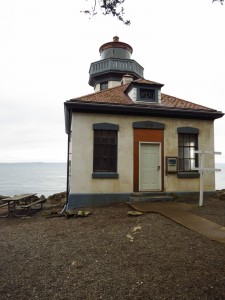And the fun continues
A week has already gone by since we moved into Friday Harbor and we have been keeping busy with class and continuing our discussions on sustainability. In my reading I came across a really interesting paper called  Sustainable resource management coupled to resilient germplasm to provide new intensive cereal-grain-legume-livestock systems in the dry savanna. Try saying that 5 times fast. Although it seems a bit daunting its a really fascinating concept. In sub-saharan Africa people are dealing with increasing populations and demand for products while still restrained by the arid climate. After years of research from the ITA (Institute of Tropical Agriculture) researchers found that farmers were hesitant to implement potentially costly technologies without seeing immediate economic profits.
So the focus for the last 10 years has been on cereal-legume and crop-livestock systems where farmers make most of their money. After developing and testing several ideas researchers found the following to be most successful and profitable. They used promiscuous soybeans and dual-purpose cowpea lines which are more efficient at fixing nitrogen. Now don’t worry, its been a while and I wasn’t even sure about the definition of nitrogen fixation, I had to look up. It is the process of changing the structure of nitrogen in order to  free up nitrogen atoms so that they can freely interact with other chemicals. This is important because nitrogen is needed to biosynthesize the basic building blocks of plants. So more efficient nitrogen fixation results in greater crop production. Another problem farmers are facing is a weed called striga which is killing their crops. A soybean they have been working with is able to bring the striga to premature “suicidal” germination. After implementing these two ideas on several farms, farmers saw immediate results. On average crops showed a $1,233 dollar increase per hectare of crop. I think it is very cool that scientists and farmers were able to work together and mitigate a specific problem using crops they already had. By understanding the properties of crops they were able to develop a rotation system to maximize profit.
We’ve been continuing our work on sustainability but are now starting to branch into the research aspect of our course. Over the weekend we put together data sheets for gathering data at Lime Kiln this week and the next. hopefully our luck seeing the Orcas will improve. At the moment we’re working on designing some sort of whale song and dance to call the whales to us, since telepathy hasn’t been working. Either way it’s going to be an exciting week at Lime Kiln.




 Twitter
Twitter LinkedIn
LinkedIn Facebook
Facebook